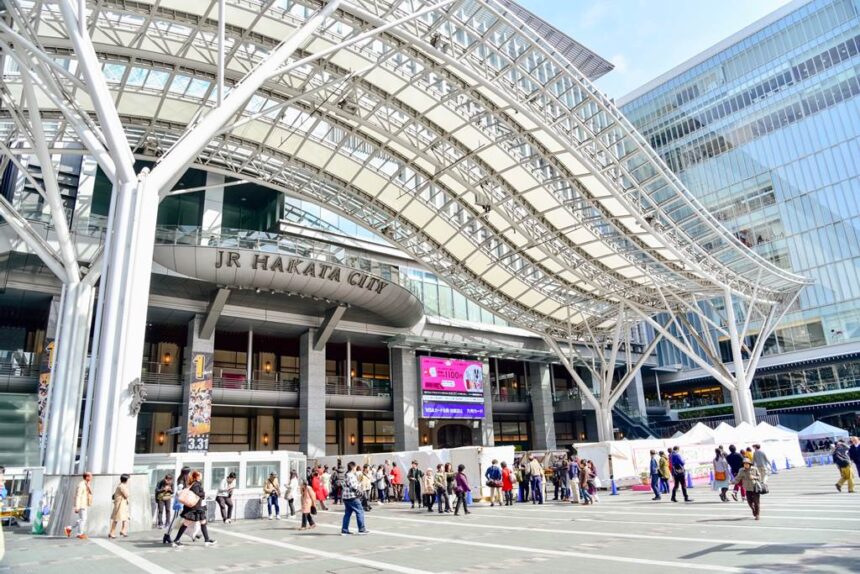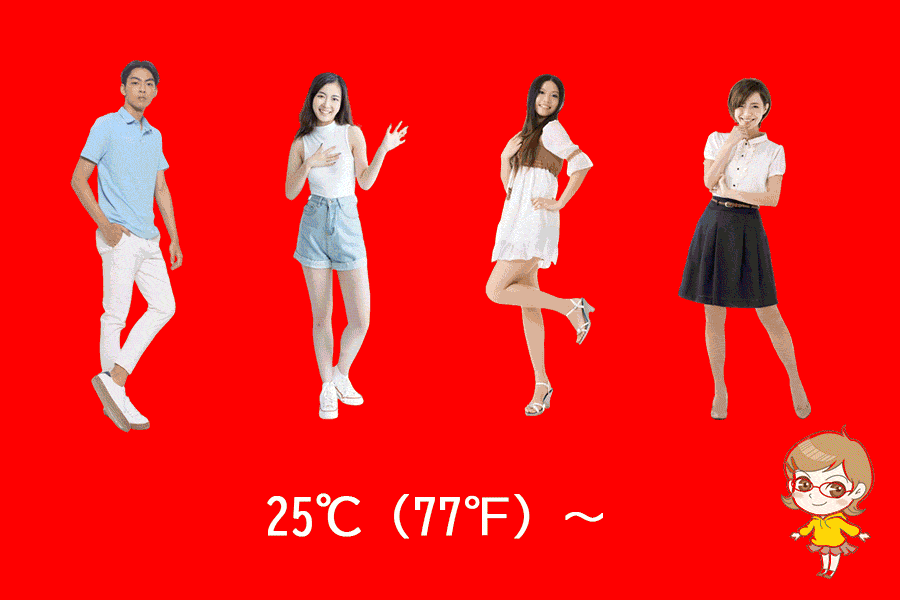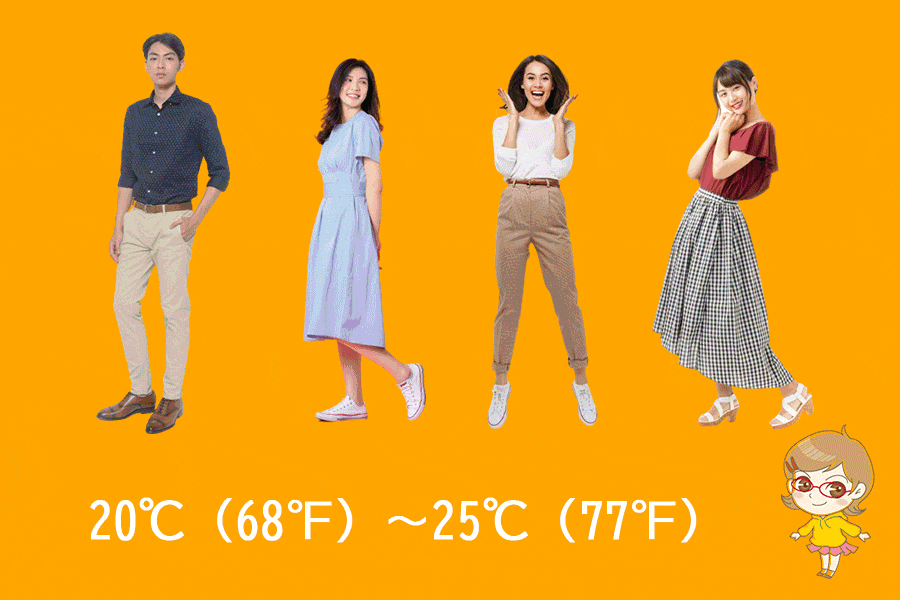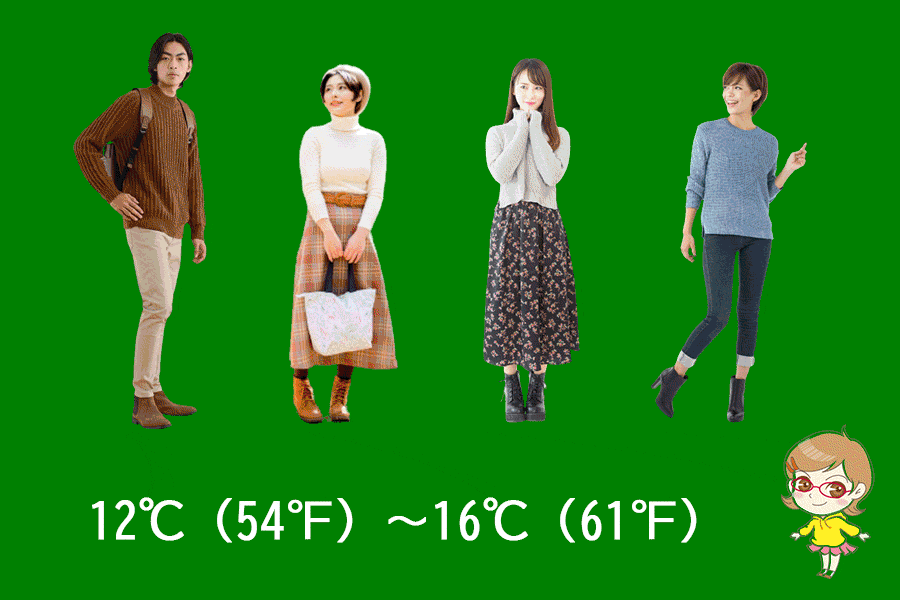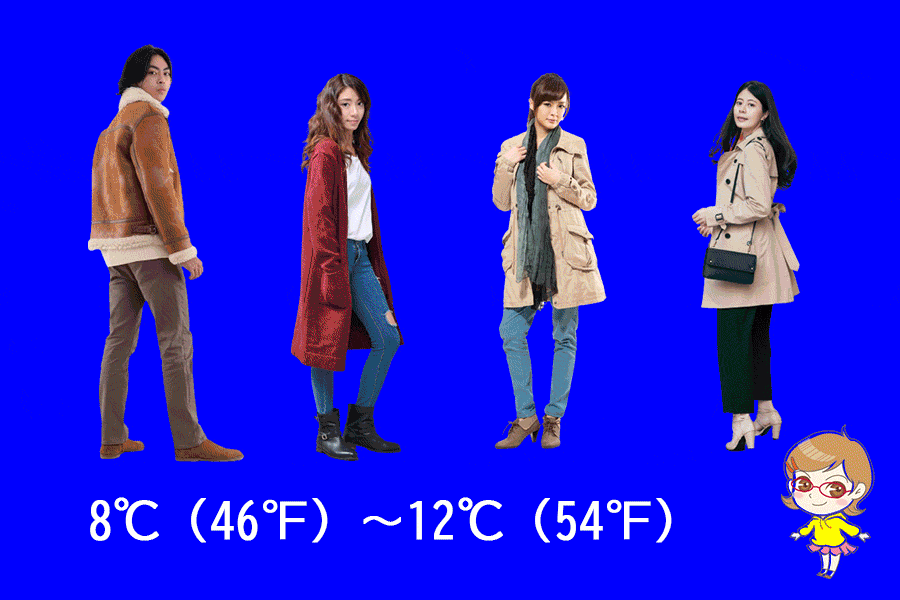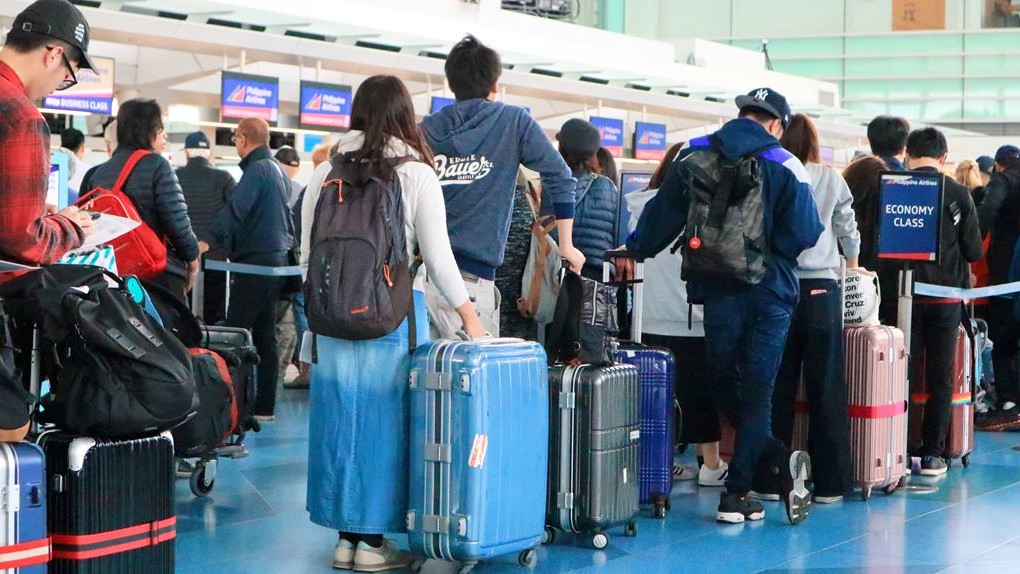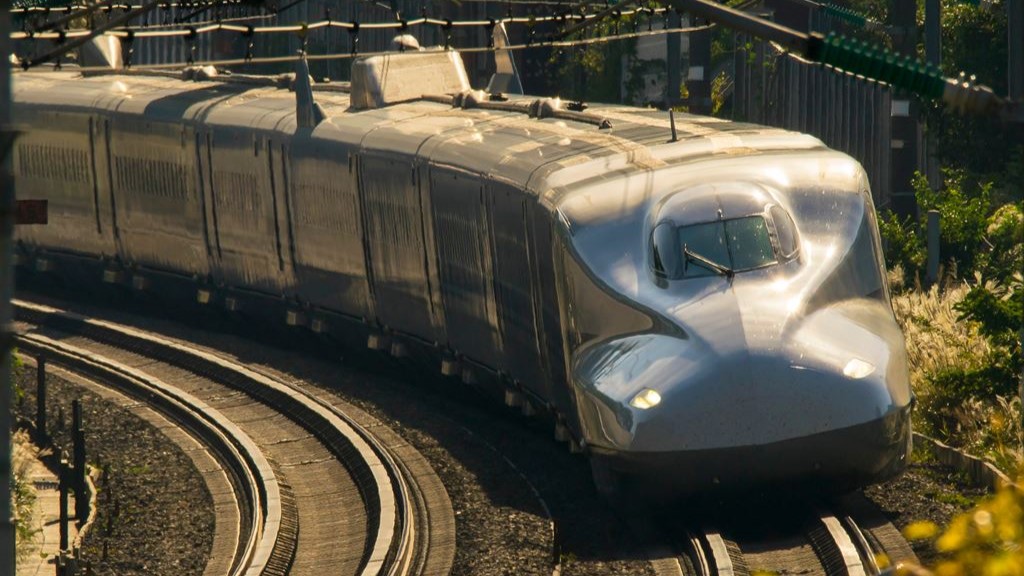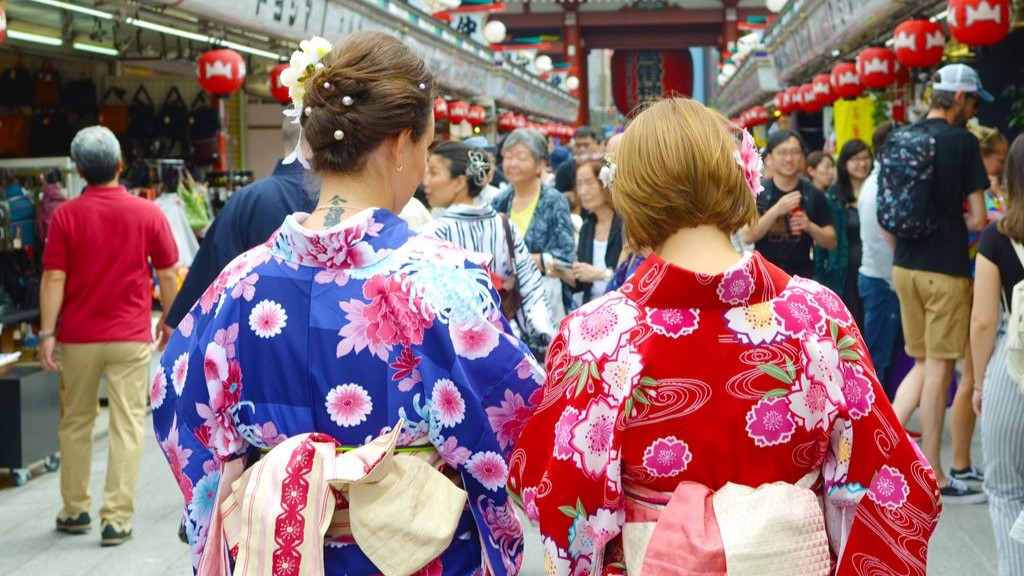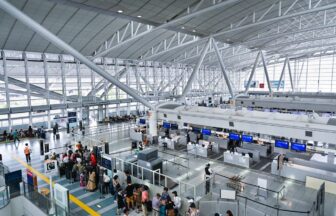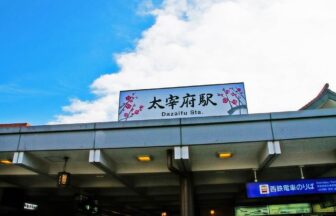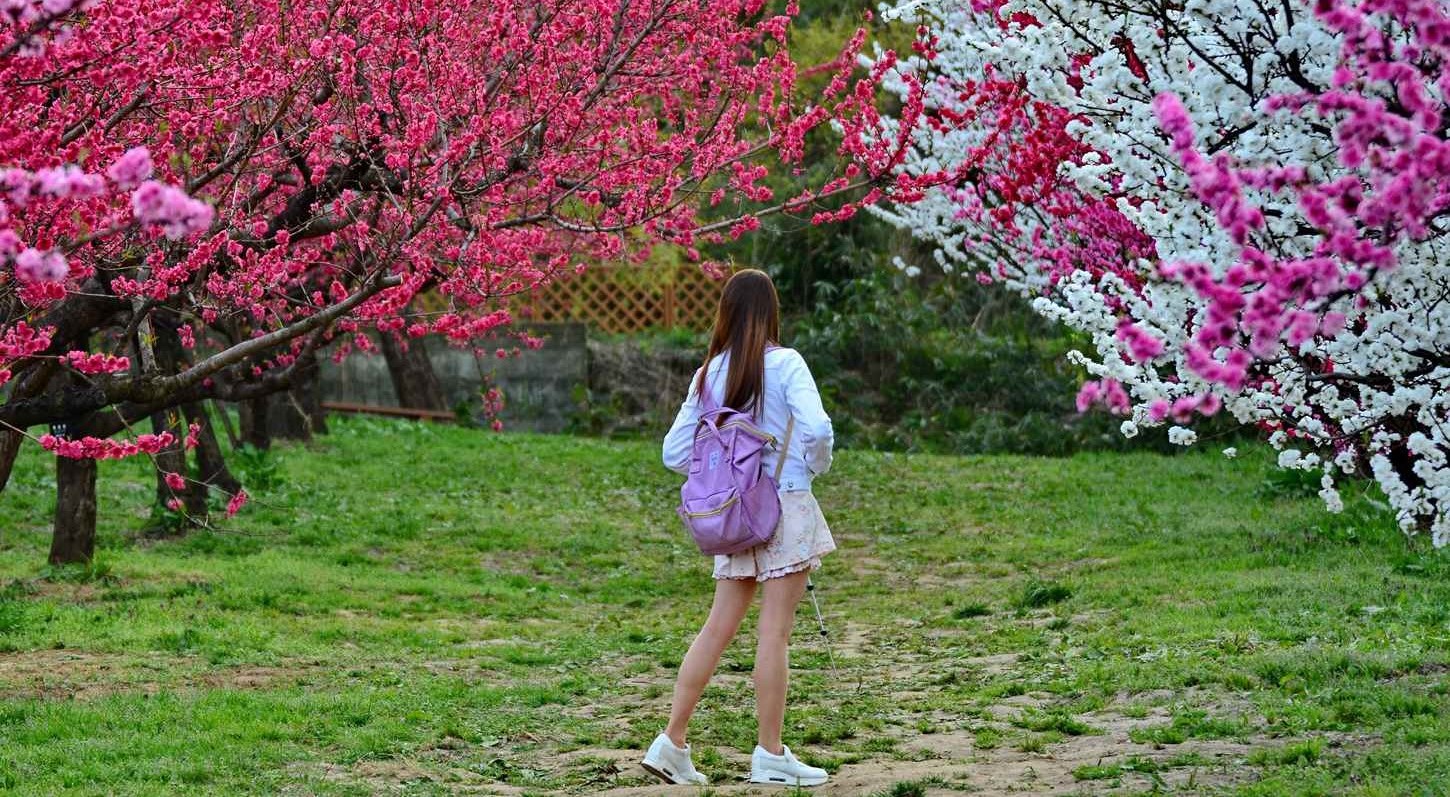778-1 Shimousui, Hakata Ward, Fukuoka, 812-0003 MAP
↓ Click to jump to the relevant section.
| Current Weather | Annual Weather | Tourist Attractions |
| Baggage Deposit | Hotels |
Current weather and clothing

The weather information shown here is the information closest to the station in question. Please note that there may be slight differences.
Yearly temperature changes and recommended clothing
Clothing recommendations for each temperature range
When traveling in Japan with the following average temperatures, the recommended clothing is as follows:
Monthly changes in temperature, precipitation, and snowfall (1991~2020 average, Japan Meteorological Agency survey)
| Jan. | Feb. | Mar. | Apr. | May | Jun. | Jul. | Aug. | Sep. | Oct. | Nov. | Dec. | |
| temperature(°C) | 6.9 | 7.8 | 10.8 | 15.4 | 19.9 | 23.3 | 27.4 | 28.4 | 24.7 | 19.6 | 14.2 | 9.1 |
| precipitation(mm) | 74.4 | 69.8 | 103.7 | 118.2 | 133.7 | 249.6 | 299.1 | 210 | 175.1 | 94.5 | 91.4 | 67.5 |
| snowfall(cm) | 1 | 1 | 0 | — | — | — | — | — | — | — | — | 0 |
Winter
December
December is one of the coldest months in Fukuoka, with an average temperature of 9.1°C. It can snow during this time of year, so it is important to dress warmly and wear appropriate footwear. Men and women should wear warm coats and jackets, as well as sweaters, scarves, gloves, and other layered clothing. Women should also wear warm boots.
January
In January, the average temperature in Fukuoka is a cool 6.9°C (43.4°F), and the average precipitation is 74.4 mm (2.5 inches), which can be light snow or rain. when going out in January, it is recommended that both men and women wear warm clothing to stay comfortable in the cold weather. Warm jackets, hats, gloves, and warm shoes are recommended. Women should wrap a woolen scarf to stay warm.
February
In February, the average temperature in Fukuoka is 7.8°C, slightly higher than the previous month, but the weather is still wintery. Average precipitation is 69.8 mm. as in January, both men and women are advised to wear warm clothes, hats, gloves, and warm shoes to stay comfortable in the cold.
Spring
March
March sees temperatures continuing to rise in Fukuoka, with an average temperature of 10.8°C. The weather remains cool with occasional rainfall, averaging around 103.7 mm. When going out in March, it is recommended that both men and women wear warm clothing with a jacket and an umbrella to protect against the rain.
April
In April, temperatures begin to rise further, with an average temperature of 15.4°C. The weather in Fukuoka in April is pleasant and mild. Average precipitation is about 118.2 mm. To be comfortable in the mild climate, men and women are advised to wear light clothing such as T-shirts and light sweaters.
May
In Fukuoka, May brings warm, spring-like days for comfortable travel. The average temperature is 19.9°C. Average precipitation is about 133.7 mm. Light clothing with long sleeves is recommended for both men and women.
Summer
June
June in Fukuoka is humid with an average temperature of 23.3°C. The rainy season lasts until mid-July, so precipitation is high at 249.6 mm. light, breathable clothing is recommended for going out in June, such as cotton T-shirts and shorts for both men and women. Please do not forget your umbrella.
July
July is the hottest month in Fukuoka, with the rainy season continuing until mid-summer, followed by full-blown summer. The average temperature for this month is 27.4℃. Humidity is high and average precipitation is about 299.1 mm. To stay comfortable in the heat, light, breathable clothing such as shorts and T-shirts are recommended for both men and women.
August
August in Fukuoka is hot and humid, with an average temperature of 28.4°C. The humidity is high, so the temperature you feel is much higher. It is important to stay hydrated and wear light, breathable clothing to prevent overheating. Loose-fitting, lightweight clothing made of breathable materials such as cotton or linen is recommended for both men and women. Shorts, T-shirts, and sunny clothes are appropriate. It is also important to wear sunscreen and a hat to protect against strong sunlight.
Autumn
September
In September, temperatures start to cool down slightly, with an average temperature of 24.7°C. While it’s still quite warm during the day, evenings can be cooler, so it’s a good idea to bring a light jacket or sweater. Men and women can wear light layers, such as a t-shirt or blouse paired with lightweight pants or a skirt. Sandals or closed-toe shoes are both appropriate footwear options.
October
October is a pleasant time to visit Fukuoka, with an average temperature of 19.6°C. The weather is mild, with cool mornings and evenings and comfortably warm afternoons. Men and women can wear a variety of clothing, from jeans and a sweater to a dress with tights. It’s a good idea to bring a light jacket or cardigan for the cooler mornings and evenings.
November
November brings cooler temperatures to Fukuoka, with an average temperature of 14.2°C. Days can be cool and crisp, while evenings can be chilly, so it’s important to pack warm clothing. Men and women can wear a warm jacket or coat, along with a hat, scarf, and gloves for extra warmth. Layers are also important, as the weather can fluctuate throughout the day.
Recommended tourist destinations
Kushida Shrine
1-41 Kamikawabatamachi, Hakata, Fukuoka 812-0026 Fukuoka Prefecture
The shrine has the oldest history as the head deity of Hakata and is dedicated to “Hakata Gions Yamakasa,” Hakata’s representative summer festival. Since ancient times, the shrine has been revered as the god of longevity and prosperity. The ginkgo tree of Kushida that stands tall at the entrance of the shrine is said to be over 1,000 years old and has been widely revered as a sacred tree since ancient times. Decorated Yamakasa floats are on display all year round (except in June), and the 13-meter-high Yamakasa boasting great power is a great photo spot.
Ohori Park
1-2 Ohorikoen, Chuo, Fukuoka 810-0051 Fukuoka Prefecture
Located in Chuo-ku, Fukuoka City, this prefectural urban park has a circumference of approximately 2 km. It has a Japanese garden, a tea ceremony house, and an art museum, and boasts excellent scenery. It is a favorite spot for Fukuoka Prefecture residents, and is also the site of a fireworks display. The pond, modeled after China’s West Lake, has a boat launch (open only from March to November) and is crowded with families and tourists enjoying their holidays.
Uminonakamichi Seaside Park
18-25 Saitozaki, Higashi-ku, Fukuoka 811-0321 Fukuoka Prefecture
This vast national park is located on the sandbar-shaped “Uminonakamichi” surrounded by Hakata Bay and the Sea of Genkai. In the park, visitors can enjoy seasonal flowers and the company of cute animals such as squirrel monkeys and capybaras. Especially in April, when the nemophila flowers are in full bloom, the whole area becomes a field of pale blue flowers, very popular among tourists.
Tenjin Underground Shopping Center
1-6-8, Tenjin, Chuo, Fukuoka 810-0001 Fukuoka Prefecture
Centered on the basement of Tenjin Crossing, this European-style underground shopping mall, with its austere cobblestone pavement, leads to the Tenjin Subway Station. It is lined with approximately 150 tenants of various kinds. It is also connected to nearly 20 buildings and shopping zones, making it convenient to go there without getting wet in the rain. Hakata Station and the airport can also be reached directly by subway.
Fukuoka Tower
2-3-26 Momochihama, Sawara-Ku, Fukuoka 814-0001 Fukuoka Prefecture
At 234 meters in length, Fukuoka Tower is the tallest seaside tower in Japan. From the observation deck on the top floor, 123 meters above the ground, visitors can enjoy a 360-degree panoramic view of the city of Fukuoka and Hakata Bay.
The view, which has been selected as one of the “100 best nightscapes,” is magnificent, and the beautiful sunset over Hakata Bay, not to mention the sparkling night view of the city, is also well worth seeing.
Nokonoshima Island
Nishi-ku, Fukuoka 819-0000 Fukuoka Prefecture
Nokonoshima Island Park spreads out on the northern tip of Nokonoshima Island, which is about 12 km in circumference in Hakata Bay. This nature park boasts approximately 30 varieties of seasonal flowers blooming throughout the year. The park also has an athletic facility, a mini zoo, and a rope skiing course that allows visitors to ride down a slope on a special sled.
Tochoji Temple
2-4 Gokushomachi, Hakata, Fukuoka 812-0037 Fukuoka Prefecture
It is said to have been built around 806 by Kukai (Kobo Daishi) after he completed his training in Tang China. The 16.1-meter-high wooden Shakyamuni Buddha, popularly known as Fukuoka Daibutsu, is the largest seated statue in Japan. The Setsubun Festival held every February is a traditional event that has been handed down since the Muromachi period (1333-1573). The festival is crowded with many worshippers every year. The seven gods of good fortune, Otafuku, red demons, and blue demons appear for the bean-throwing ceremony, which is very exciting. The surrounding area has a quiet townscape with a series of historic temples and shrines, and in autumn, light-up events are held so that visitors can enjoy walking around the town.
Dazaifu Temmangu
4-7-1 Saifu, Dazaifu 818-0017 Fukuoka Prefecture
Dazaifu Tenmangu Shrine is dedicated to Sugawara Michizane, the god of learning. The shrine is the head shrine of approximately 12,000 Tenmangu shrines throughout Japan and is one of the largest shrines in Kyushu, attracting many people from Japan and abroad to pray. The vermilion-lacquered main hall and surrounding shrine garden are dotted with various historic buildings, including the Tenkai Inari Shrine, the Hall of Treasures, and the Suga Lord History Museum. There are many festivals, events, and other attractions throughout the year, weaving a long history of more than 1,100 years into the present.
Munakata Grand Shrine Shimpokan
2331 Tashima, Munakata 811-3505 Fukuoka Prefecture
Munakata-taisha Shrine is one of the oldest shrines in Japan that appears in Japanese mythology. The shrine is deeply revered as a deity that protects the imperial family and the nation, and attracts many worshippers who pray for safe voyages and traffic safety. The “Miare Festival” is held every year on October 1 to pray for safety at sea and a good catch of fish. The spectacle of two boats carrying the sacred regalia and about 200 local fishing boats with colorful big fishing flags and large banners fluttering in the air parade from Oshima Port to Kounominato for about one hour is a spectacular sight.
Where to leave your luggage
Hakata Station is vast, and there are nearly 10 locations where coin lockers are located.
The location with the largest number of lockers can be found on the first floor of the station, to the left as you exit the North Exit ticket gate. Next to that coin locker space is TiS Hakata (travel agency), which offers baggage storage service. It is open from 11:00 to 17:30.
There is a “General Information Center” right in front of the North Exit ticket gate, where you can get information about coin lockers.
Recommended hotels and inns
Grand Hyatt Fukuoka
1-2-82 Sumiyoshi, Hakata, Fukuoka 812-0018 Fukuoka Prefecture
12-minutes walk from Hakata Station
Hotel class: 5
Hotel style: River View , Centrally Located
Check Rates & Availability:
>> See on Tripadvisor
>> See on Trip.com
>> See on Expedia
Hotel Okura Fukuoka
3-2 Shimokawabatamachi, Hakata, Fukuoka 812-0027 Fukuoka Prefecture
20-minutes walk from Hakata Station
Hotel class: 5
Hotel style: Modern
Check Rates & Availability:
>> See on Tripadvisor
>> See on Trip.com
>> See on Expedia
Oriental Hotel Fukuoka Hakata Station
4-23 Hakataeki Chuogai, Hakata, Fukuoka 812-0012 Fukuoka Prefecture
2-minutes walk from Hakata Station
Hotel class: 4
Hotel style: Centrally Located , Business
Check Rates & Availability:
>> See on Tripadvisor
>> See on Trip.com
>> See on Expedia
Miyako Hotel Hakata
2-1-1 Hakataekihigashi, Hakata, Fukuoka 812-0013 Fukuoka Prefecture
3-minutes walk from Hakata Station
Hotel class: 4
Hotel style: City View ,Business
Check Rates & Availability:
>> See on Tripadvisor
>> See on Trip.com
>> See on Expedia
Hotel Nikko Fukuoka
2-18-25, Hakataekimae, Hakata, Fukuoka 812-0011 Fukuoka Prefecture
5-minutes walk from Hakata Station
Hotel class: 4
Hotel style: Business , Centrally Located
Check Rates & Availability:
>> See on Tripadvisor
>> See on Trip.com
>> See on Expedia
Solaria Nishitetsu Hotel Fukuoka
2-2-43, Tenjin, Chuo, Fukuoka 810-0001 Fukuoka Prefecture
1.3mi/2.1km from Hakata Station
Hotel class: 3.5
Hotel style: Family , Business
Check Rates & Availability:
>> See on Tripadvisor
>> See on Expedia
Nishitetsu Hotel Croom Hakata
1-17-6, Hakataekimae, Hakata, Fukuoka 812-0011 Fukuoka Prefecture
4-minutes walk from Hakata Station
Hotel class: 3
Hotel style: Family , Centrally Located
Check Rates & Availability:
>> See on Tripadvisor
>> See on Trip.com
>> See on Expedia
Hakata Tokyu REI Hotel
1-2-23, Hakataekimae, Hakata, Fukuoka 812-0011 Fukuoka Prefecture
4-minutes walk from Hakata Station
Hotel class: 3
Hotel style: Modern , Business
Check Rates & Availability:
>> See on Tripadvisor
>> See on Trip.com
>> See on Expedia
Mitsui Garden Hotel Fukuoka Gion
2-8-15, Hakataekimae, Hakata, Fukuoka 812-0011 Fukuoka Prefecture
9-minutes walk from Hakata Station
Hotel class: 3
Hotel style: Charming , Business
Check Rates & Availability:
>> See on Tripadvisor
>> See on Trip.com
>> See on Expedia
Canal City Fukuoka Washington Hotel
1-2-20 Sumiyoshi, Hakata, Fukuoka 812-0018 Fukuoka Prefecture
11-minutes walk from Hakata Station
Hotel class: 3
Hotel style: Mid-range , Business
Check Rates & Availability:
>> See on Tripadvisor
>> See on Trip.com
>> See on Expedia
We support your itinerary planning!
Click the button to get an overview of hotel information and popular tourist routes from all over Japan featured on our site. We’ve included comprehensive details to aid in planning your trip, so please make use of it.
Comprehensive checklist before traveling to Japan

Book flights
Compare and purchase flight tickets
When planning your trip to Japan, it's advisable to start by researching flights several months in advance. Airlines often release promotional fares, especially during off-peak seasons. Use comparison sites like Skyscanner or KAYAK to get a sense of the price range. Be flexible with your travel dates if possible; flying mid-week might be cheaper than on weekends.
>> Visit Skyscanner's official website
>> Visit KAYAK's official website
Order Japan Rail Passes for each family member
Purchase your Japan Rail Pass before departure
The Japan Rail (JR) Pass offers unlimited travel on JR trains, making it a cost-effective option for tourists. However, it's only available to foreign tourists and must be purchased *before* you arrive in Japan. Determine the areas you plan to visit; if you're traveling extensively, a nationwide pass is beneficial, but if you're only exploring a specific region, consider regional JR passes. Children under 12 get a discounted pass, so ensure you order the correct type for each family member.
>>Visit Japan Rail Pass's website
Plan your attire for Japan
Check the weather at your destination on this site
Japanese weather varies significantly by season. In summer, it's hot and humid, so breathable clothes are essential. Winters, especially in the north, can be cold, requiring warm attire. If visiting during the rainy season (June to early July), pack a good umbrella and waterproof shoes. While Japan is generally casual, certain places like temples, shrines, or upscale restaurants may require modest and neat dressing.
Reserve a pocket Wi-Fi or SIM card
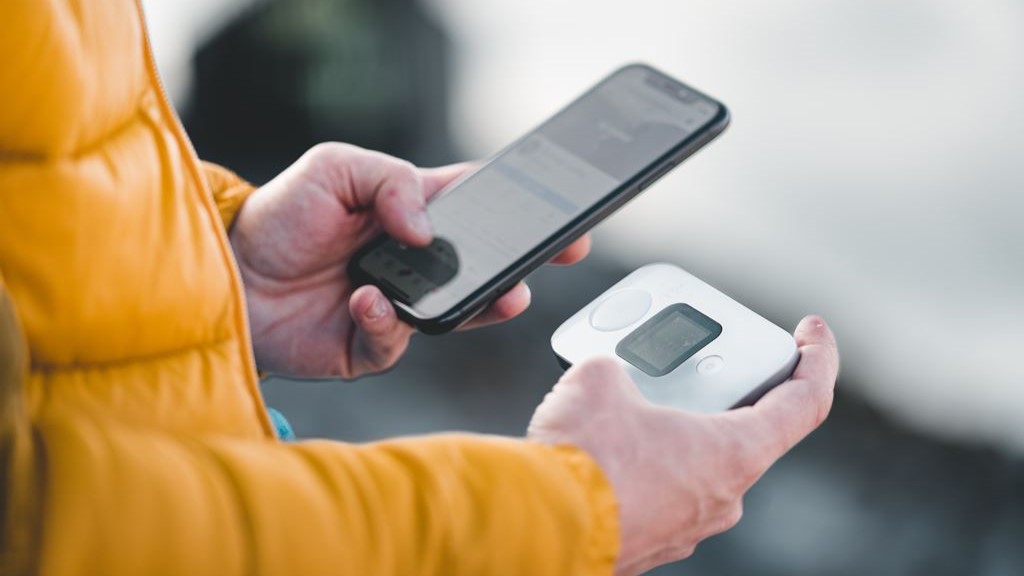
SIM card or pocket Wi-Fi is required
Beyond clothes, consider packing essentials like a universal power adapter (Japan uses Type A and B sockets), portable Wi-Fi or SIM card for internet access, and any necessary medications (with a copy of the prescription).
Which is better: a SIM card or pocket Wi-Fi?
When traveling in Japan, one essential to consider is securing internet access, especially given that many locations still don't offer free Wi-Fi. To ensure you can use your smartphone throughout your trip, you'll typically have three options: (1) a SIM card, (2) pocket Wi-Fi, or (3) the roaming service provided by your mobile company. Roaming services can be quite expensive, so we often recommend using a SIM card or pocket Wi-Fi. While SIM cards tend to be more affordable than pocket Wi-Fi, they can be trickier to set up. Pocket Wi-Fi, on the other hand, can be shared among several users, making it a favorable choice for families or groups.
▼SIM card
Advantages:
Relatively affordable.
Disadvantages:
Can be time-consuming to set up initially.
May have strict data limits.
▼Pocket Wi-Fi
Advantages:
Offers substantial data allowances.
A single device can be shared among multiple users.
Easily usable with PCs as well.
Disadvantages:
Typically more expensive.
Japan's representative services

Sakura Mobile's website
▼SIM card
>>Visit Sakura Mobile's official website
>>Visit mobal's official website
▼pocket Wi-Fi
>>Visit Sakura Mobile's official website
>>Visit NINJA WiFi's official website
>>Visit Wi-Fi RENTAL Store's official website
Book local tours as needed
Pre-book your tour and have a great trip!
Local tours offer deep insights into Japan's culture and heritage. Websites like Viator or GetYourGuide offer a variety of tours, from traditional tea ceremonies to modern pop culture tours in Akihabara. Consider unique experiences like staying with monks on Mt. Koya or taking a cooking class to learn authentic Japanese dishes.
>>Visit Viator's official website
>>Visit GetYourGuide's official website
Purchase advance tickets for popular attractions
Make a reservation to avoid crowds
Attractions like Tokyo Disneyland, Universal Studios Japan, or the Studio Ghibli Museum often have long ticket queues. Buy tickets online in advance to save time. Some attractions also have timed entry, so check the specific time slots available and plan accordingly.
▼Tokyo Disney Resort
>>Visit Tokyo Disney Resort official website
>>Visit Viator's Tokyo Disneyland page
>>Visit Viator's Tokyo DisneySea page
>>Visit GetYourGuide's Tokyo Disneyland page
>>Visit GetYourGuide's Tokyo DisneySea page
▼Universal Studios Japan
>>Visit USJ official website
>>Visit Viator's USJ page
>>Visit GetYourGuide's USJ page
Buy travel insurance

insurance concept, health, life and travel insurance
It is important to be prepared for emergencies
While Japan is a safe country, travel insurance is crucial for unforeseen events like health emergencies, travel disruptions, or lost baggage. Ensure your policy covers medical expenses in Japan, as healthcare, though excellent, can be expensive.
Here we introduce online travel insurance services that are popular worldwide.
World Nomads: An online travel insurance service widely endorsed by travelers worldwide. They offer plans that cover adventurous activities and high-risk sports.
>>Visit World Nomads' official website
AIG Travel Guard: An insurance service available to travelers all over the world. They offer a wide range of options, including cancellation protection and emergency medical insurance.
>>Visit AIG Travel Guard's official website
Share your itinerary with emergency contacts
Organize your reservation information
Keep a digital and printed copy of your detailed itinerary, including hotel addresses, train schedules, and booked tours. Share this with a trusted family member or friend not traveling with you.

